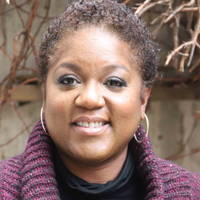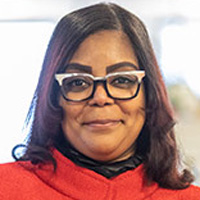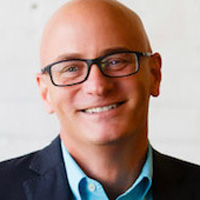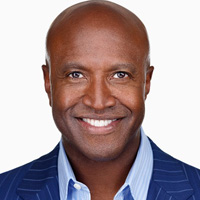
Better Recruitment And Retention Efforts Are Key To Improved Diversity

Recent data suggests diversification in TV news has been on the rise over the past few years. But in retrospect, as the United States engages in a reinvigorated discourse about widespread workplace equity, the leaps have been short.

Michelle Duke
“The industry has long prided itself on being a public service to the communities that we serve, and if your newsroom and/or your entire organization lacks diversity, then naturally you’re creating an opportunity for there to be a gap in terms of your coverage and the service that you can provide,” said Michelle Duke, president of the National Association of Broadcasters’ Leadership Foundation and its chief diversity officer. “Diversifying our staffs is definitely an issue for our industry.”
Duke’s remarks came during the TVNewsCheck webinar “Report Card on Race: A Media Industry Reckoning,” where organization leaders discussed ways in which TV news can address underrepresentation, and how they feel the business is generally performing in the arena.
Acknowledging the title of the webinar, moderator and TVNewsCheck editor Michael Depp asked the participants to hand down actual letter grades to the industry on its diversity and inclusion efforts. He also asked the panel what grade they each believe the industry might realistically be able to achieve by the end of this year.

Danyelle Wright
Duke said she’d give the industry a “C,” but compared the sector to “an eager student,” willing to improve and work toward a higher grade. Danyelle Wright, VP of employment and labor law at the E.W. Scripps Co., and Richard Dyer, president and GM of WUSA, Tegna’s CBS affiliate in Washington, D.C., emerged slightly more optimistic. Wright awarded the industry a “B-minus” and hoped to be able to give it a “B” or a “B-plus” in the short term. Dyer granted TV news a “C-plus,” but agreed that a “B-plus” by the new year might not be out of the realm of possibility.
In spite of Scripps doing a “marvelous job” on the diversity and inclusion front, the company’s VP of news, Sean McLaughlin, said the leadership roles in TV news are not filled by nearly enough people of color for him to award the industry any grade quite so favorable as those dished out by his colleagues.

Sean McLaughlin
“I give us a ‘C-minus’ or a ‘D-plus’ right now,” McLaughlin said. He added that significant change probably won’t come during the remaining five months of a year such as 2020, riddled with uncertainty about so many issues.
After McLaughlin provided his grade, Depp noted that the webinar’s audience members lit up the chat room with emphatically typed remarks of agreement.
There are a number of ways the industry can earn better diversity and inclusion grades — and not just from insiders but, more importantly, from the general public. Some of them include:
Having a Chief Diversity Officer — Depp asked the panel about the importance of a chief diversity officer to a company, a role that Wright filled prior to her VP promotion in 2018. She said that in her experience, she had the power to “understand what has been done in the past” to address the diversity issue at the company. She said she could also “build upon … a very strong foundation” and help Scripps “pivot if necessary.” She also encouraged TV news organizations to “capitalize” on this moment of social unrest and “forward-moving momentum to enact change.”
“It couldn’t be a better time to really zero in” on diversity and inclusion within newsgroups, Duke, who became NAB’s chief diversity officer earlier this year, agreed. She explained that the role should be seen as more of a “facilitator” of conversations and subsequent actions across an organization, not someone who should take on the burden of reorganizing an entire company “that may have years of things to course-correct.”
That’s simply too much to ask, Duke said, and improved diversification and inclusion requires all team members to participate.

Richard Dyer
Improve Approaches to Recruitment — Studies show that employers tend to hire candidates most like themselves. When it comes to recruitment as a means to address diversity across TV news, Dyer observed that the industry’s relatively small size, and the fact that its decision makers have historically and predominantly been white males, doesn’t help matters. Thus, diversity initiatives are stymied, sometimes unwittingly.
“The first thing we have to do is modernize our recruiting so that we’re casting a wider net and look at opportunities for talent with a much broader lens,” Dyer said. “That’s absolutely step one.”
McLaughlin agreed, saying that companies committed to a more diverse workforce might also want to rethink what it means for a candidate to be “the right fit.” Focusing too much on something so subjective likely won’t help.
“This is where that implicit bias piece can, unwillingly and unknowingly, come into play, and I think that happens more than we realize,” he said.
With unemployment at numbers not seen since the Great Depression, Dyer said any company that’s hiring in 2020 will discover outstanding talent available in the job pool right now, so it’s a great time to turn promises of improved diversity into action.
It’s also incumbent on organizations to get word out to underserved communities that TV news hosts a series of jobs behind not only the anchors and reporters, but the camera operators and producers as well.
Duke said that the NAB has created initiatives to provide such information to people of color still in school, reaching out to organizations like the National Sales Network, the National Society for Black Engineers and the Society of Professional Hispanic Engineers — as well as the Society of Women Engineers to help with female inclusion concerns, too. She’s also discussed such employment opportunities with individuals at various conferences.
“They just aren’t aware of the fact that there are sales and engineering opportunities in our industry,” she said. “Collectively as an industry, we have to shine a better light on what we do, and really make a concerted effort to go and attract these [minority] students.”
Train People of Color for Upper-Management Positions — Welcoming people of color through the doors of a news group is certainly a step in the right direction. But if the new recruits are unable to advance to a place of leadership, institutional change could still be stymied over the long term.
Scripps has recently established training programs to help prepare assistant news directors for positions in upper management. McLaughlin said of the 10 such employees, eight were individuals from minority communities.
“I think five or six of those people are running newsrooms in our company now,” McLaughlin said. “When you have that story to tell, it makes it easier to bring in other people into lower levels of the company, knowing that you’ve put your money where your mouth is, and you don’t just talk, you actually make those kinds of advances with a commitment to people.”
Once these employees find themselves in positions of influence, they’ll be able to break those cycles of recruitment practices, teeming with homogenization.
In closing, Depp asked the panel, and — in the form of a poll — the audience, as to whether they felt the current enthusiasm for better diversity and inclusion in TV newsgroups would fade or result in enhanced industry diversification.
Wright said, in her mind, it is “inevitable that the news cycle will change,” and this discourse about workplace equity in the zeitgeist could move to a back burner.
“It is not inevitable that the commitment of companies will change,” she added. “I very much embrace the principle that it’s a movement, and not a moment.”
She said the energy behind the cause feels too great, that the people behind it will continue to ask questions and demand results.
When the audience poll votes had been tallied, an overwhelming majority of viewers, some 71%, said they, too, believed change was on the horizon.
One way or another, we’re sure to find out.

































Comments (0)